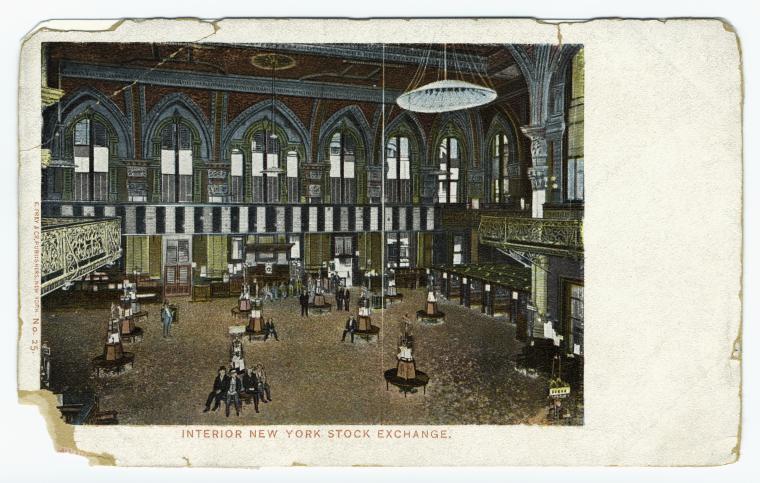There are two forces investors need to understand when determining the path of stock prices. The first is the Fed and the second is corporate earnings.

>> To subscribe to this monthly newsletter, click on Subscribe!
Earnings, Interest Rates, and Stock Prices
Stock prices are a function, among other items, of their estimated future earnings discounted by the prevailing interest rates. It’s apparent that a company whose earnings are increasing should have its stock price rising.
What is less apparent is that when interest rates rise, the value of these future profits, today, decreases. Conversely when rates fall today’s value of a future stream of earnings increases. There is an ongoing “dance” between the two forces – earnings and interest rates.
The First Year-Over-Year Decline in Earnings Since the Early Part of the Pandemic?
Let’s see how the picture looks now.
From an earnings perspective, according to FactSet, with 80% of S&P500 companies reporting their 4Q22 profits, 68% have posted a positive earnings surprise. However, earnings for the S&P500 still have declined by 4.7%. If this holds through the rest of the reporting season, this will be the first year-over-year decline since the early part of the Pandemic.
Of the companies reporting, just 20 have said their profits should improve this quarter. In our two-force model, earnings are not looking supportive of stock prices. The Fed is working to fight inflation by increasing interest rates. In a simple model, this impacts the P/E ratio for stocks.
Higher Interest Rates Mean Lower P/Es
Other things being equal, higher interest rates mean lower P/Es. If both earnings and P/Es move lower, stock prices will go down.
Up until this week, the market bulls felt that inflation has peaked, the economy has slowed, and the Fed will soon need to stop rate increases and perhaps even lower rates by the end of 2023. This would allow P/Es to rise, offsetting any weakness in profits.
Stock Prices, a Resilient Economy, and Stubborn Inflation
Unfortunately for the bulls, the latest economic news showed a resilient economy and stubborn inflation. Investors have had to re-think their view that the Fed will come to the rescue of stocks. It all comes down to inflation. We just don’t know if prices are easing materially enough to pause the Fed.
We need more data. The next CPI report will be released on March 14. Investors need to be selective, choosing shares of companies that can keep profits steady. This way investors can at least have the earnings part of the equation covered even if P/Es move lower.
What About the Bond Market?
The bond market is in its own internal conflict.
On one side, the Fed has raised short-term rates in an attempt to slow the economy and ease inflationary pressures. This has caused rates of shorter-dated debt to go up. That makes sense.
However, longer-dated paper has lower yields than short-term debt. Investors are concerned that the Fed will slow the economy too much and cause a recession. In a recession, the demand for money is low and therefore interest rates (the price of money) are low. The resulting shape of the curve is inverted, that is to say, short-term rates are higher than long-term rates.
Why this is considered unusual is that the yield curve is normally upward-sloping with lower short-term rates and higher longer-term rates. The positive slope reflects the higher compensation investors require due to the uncertain future and as an incentive to tie up money for longer periods of time.
Attractive Short-Term Bond Rates
Currently, the financial media and many advisors are informing investors about attractive short-term rates.
The yield on the 6-month US Treasury bill and the one-year note are both about 5%. This is undoubtedly an attractive rate given the recent years of ultra-low rates. US Treasuries are “safe” money and a 5% yield is not that much lower than rates on debt instruments that have credit risk like corporate bonds.
Think of Short-Term Reinvestment Risk
Before an investor piles into short-term Treasuries, s/he should think of reinvestment risk.
What happens after 6 months or a year?
If inflation eases, rates could decline substantially and investors would have to accept lower rates when their short-term investments mature.
Nothing is easy about investing and market participants need to balance a lot of factors. It may make sense to put some money in short-term and put money into some longer-term maturities. The rates on longer-term notes and bonds are up as well, just not as high as shorter maturities. At least if rates go down, investors get to have some “higher” yields for longer.
Don’t Give Up on Stocks and Stock Prices!
It also means that investors should not give up on stocks. If rates decline, stocks may provide better returns going forward. It’s all about balance and finding the right asset allocation.
Thanks for reading.
>> Read the February Newsletter <<
Note: This blog article is intended for general informational purposes only. Nothing in it should be construed as, and may not be used in connection with, an offer to sell, or a solicitation of an offer to buy or hold, an interest in any security or investment product. Investing involves risk.